-

Nov
04
Interpretive Summary: Increasing dietary proportion of heat grain in finishing diets containing distillers’ grains: impact on nitrogen utilization, ruminal pH, and digestive function
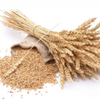
The use of Dried distillers’ grains with solubles (DDGS) in ruminant diets has increased drastically over the last ten years. This alternative feed resource offers a product that is very high in crude protein (CP).
Read more
-

Nov
04
Interpretive Summary: Short term health impacts of feeding cats black soldier fly larvae meal

There is currently great potential for including black soldier fly larvae meal (BSFLM, Hermetia illucens) in companion animal feed. Although high in protein and nutrient rich, the health impacts of including BSFLM in companion animal feed are largely unknown.
Read more
-

Nov
01
Interpretive Summary: Herbage mass and allowance and animal genotype affect daily herbage intake, productivity, and efficiency of beef cows grazing native subtropical grassland
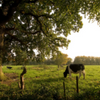
It is crucial that beef cow-calf systems in subtropical native grasslands, such as Campos, must improve their cow-calf and economic productivity without external inputs while still reducing the environmental impact. This could potentially be done through the control of herbage allowance, improving herbage production, cow herbage intake, and biological efficiency.
Read more
-

Nov
01
Interpretive Summary: Influences on the assessment of resource- and animal-based welfare indicators in unweaned dairy calves for usage by farmers
.png?sfvrsn=60da4cd1_0)
A study recently published in the Journal of Animal Science aimed to apply possible animal welfare indicators for unweaned dairy calves on conventional dairy farms with early cow-calf separation. An animal welfare assessment, using 7 resource-based and 14 animal-based indicators, was conducted at 42 typical Western German dairy farms (844 calves) in 2018 and 2019 by two observers.
Read more
-

Nov
01
Interpretive Summary: Impacts of water quality on feed and water intake of cattle
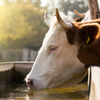
Water quality can be problematic in the livestock industry due to reduced fresh water and groundwater supplies. Most water consumed by livestock tends to be saline or brackish however the effects water quality might have on overall health, feed intake and digestibility are unknown.
Read more
-

Oct
27
Interpretive Summary: Effects of mannan oligosaccharides and Lactobacillus mucosae on growth performance, immune response, and gut health of weaning pigs challenged with Escherichia coli lipopolysaccharides
.png?sfvrsn=b2d84cd1_0)
The use of prebiotics and antibiotic alternatives in pigs has been a recent hot-topic study. Mannan oligosaccharides (MOS) have been shown to improve growth performance and nutrient digestibility in weanling pigs.
Read more
-

Oct
27
Interpretive Summary: Mycotoxin deactivator improves performance, antioxidant status, and reduces oxidative stress in nursery pigs fed diets containing mycotoxins
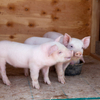
The present study aimed to evaluate the impact of the supplementation of a mycotoxin deactivator composed by adsorbent clay minerals, inactivated fermentation extracts of Saccharomyces cerevisiae, and a blend of antioxidants, organic acids, and botanicals in diets containing added mycotoxins for nursery pigs on their performance and antioxidant status.
Read more
-

Oct
27
Interpretive Summary: Dietary zinc concentration and lipopolysaccharide injection affect circulating trace minerals, acute phase protein response, and behavior as evaluated by an ear-tag–based accelerometer in beef steers
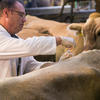
The National Animal Health Monitoring System estimates that bovine respiratory disease affects 21.2% of all beef cattle placed in feedlots. Bovine respiratory disease often affects cattle during the receiving period, which can involve many stressors; identifying morbid cattle early may lead to improved animal welfare through decreased morbidity and mortality and increased treatment efficacy.
Read more
-

Oct
25
Report on US Cattle Market Published for Congress

The Agriculture and Food Policy Center (AFPC) at Texas A&M University recently published The U.S. Beef Supply Chain: Issues and Challenges. The book is a culmination of items presented and discussed during an AFPC workshop on cattle markets held in June 2021.
Read more
-

Oct
25
R&D Spending Increases in FY 2020

The National Center for Science and Engineering Statistics, part of the National Science Foundation (NSF), published the FY 2020 Federally Funded Research and Development Centers (FFRDC) Research and Development Survey Report. Conducted annually for university administered FFRDCs since FY 1953 and all FFRDCs since FY 2001, the survey collects information on research and development (R&D) expenditures by the source of funds and types of research and expenses.
Read more
-

Oct
25
United Nations Food System Summit Highlights

The goal of the meeting is to find collaborative and sustainable ways to eliminate hunger and build a durable food supply. The Summit was attended by United Nations (UN) member states, private sector representatives, farmers, producers, and civil society participants and focused on concrete actions to transform food systems to accelerate progress on all 17 Sustainable Development Goals, created by the UN in 2015.
Read more
-

Oct
25
USDA Gives $100 Million for Food Supply Chain

The United States Department of Agriculture (USDA) announced an additional $100 million in funding from the American Rescue Plan Act. The funding help address food system challenges and leverage millions more in lending through community and private sector lenders to expand meat and poultry processing capacity and finance other food supply chain infrastructure.
Read more
-

Oct
25
US Adult Obesity Increases

The United States Centers for Disease Control and Prevention (CDC) released new evidence that 16 states now have obesity rates of 35% or higher. Four states, Delaware, Iowa, Ohio, and Texas are the newest additions to the list during the past year. This number has nearly doubled from 2018, and all 50 states have more than 20% of adults with obesity.
Read more
-

Oct
25
USDA Awards SNAP Programs

“USDA’s commitment to improving the integrity of SNAP is never-ending, and states are crucial partners in that effort,” said Brandon Lipps, Deputy Under Secretary for USDA’s Food, Nutrition, and Consumer Services. “The grants announced today will foster new and expanded strategies for reducing fraud and payment errors, protecting taxpayer dollars, and ensuring public confidence in this program.”
Read more
-

Oct
25
USDA Funds Equality in Agriculture

“Equity is a vital consideration in all we do at USDA,” said Agriculture Secretary Tom Vilsack. “We must see to it that the programs we support and the investments we make are available to all and that we take distinct action in ensuring that historically underserved farmers and ranchers are able to participate in USDA programs and benefit from the opportunities USDA investments and programs can help create.”
Read more
-

Oct
25
California to Ban Gas-Powered Lawn Equipment

Starting as early as 2024, the state of California will ban the sale of gas-powered lawnmowers, leaf blowers, and chainsaws. The law requires all newly sold small-motor equipment primarily used for landscaping to be zero-emission. The California Air Resources Board will determine the date at which it is feasible to implement the law.
Read more
-

Oct
25
Head of NIH Steps Down

“It has been an incredible privilege to lead this great agency for more than a decade,” said Dr. Collins. “I love this agency and its people so deeply that the decision to step down was a difficult one, done in close counsel with my wife, Diane Baker, and my family. I am proud of all we’ve accomplished. I fundamentally believe, however, that no single person should serve in the position too long and that it’s time to bring in a new scientist to lead the NIH into the future. I’m most grateful and proud of the NIH staff and the scientific community, whose extraordinary commitment to lifesaving research delivers hope to the American people and the world every day.”
Read more
-

Oct
25
FSIS Denies Petition to Consider Cultured Meats Plant-Based
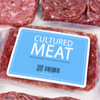
The USCA’s petition was primarily targeted towards synthetic and lab-grown products. FSIS addressed both topics. Considering lab-grown, cell-cultured products, FSIS stated that it intends to address this issue through an Advanced Notice of Proposed Rulemaking (ANPR), which was published on September 3rd. USCA’s petition is stated within the ANPR summary.
Read more
-

Oct
25
Opportunities for Fairness in Farming Act Introduced

“For far too long, farmers and ranchers have been forced to pay into these programs only to see their dollars go to trade and lobbying organizations that work against their very existence. USDA has failed to act, so it’s time for Congress to step in and do what’s right for family farmers and ranchers,” said Joe Maxwell, President of the Family Farm Action Alliance.
Read more
-

Oct
25
Cattle Antitrust Class Action Lawsuit Proceeds

The Ranchers-Cattlemen Action Legal Fund United Stockgrowers of America (R-CALF USA) have recently been involved in two cases related to the beef industry. The first against the nation’s 4 largest beef producers and the second against the Beef Checkoff Program.
Read more
 NovInterpretive Summary: Increasing dietary proportion of heat grain in finishing diets containing distillers’ grains: impact on nitrogen utilization, ruminal pH, and digestive function
NovInterpretive Summary: Increasing dietary proportion of heat grain in finishing diets containing distillers’ grains: impact on nitrogen utilization, ruminal pH, and digestive function The use of Dried distillers’ grains with solubles (DDGS) in ruminant diets has increased drastically over the last ten years. This alternative feed resource offers a product that is very high in crude protein (CP).
The use of Dried distillers’ grains with solubles (DDGS) in ruminant diets has increased drastically over the last ten years. This alternative feed resource offers a product that is very high in crude protein (CP). NovInterpretive Summary: Short term health impacts of feeding cats black soldier fly larvae meal
NovInterpretive Summary: Short term health impacts of feeding cats black soldier fly larvae meal There is currently great potential for including black soldier fly larvae meal (BSFLM, Hermetia illucens) in companion animal feed. Although high in protein and nutrient rich, the health impacts of including BSFLM in companion animal feed are largely unknown.
There is currently great potential for including black soldier fly larvae meal (BSFLM, Hermetia illucens) in companion animal feed. Although high in protein and nutrient rich, the health impacts of including BSFLM in companion animal feed are largely unknown. NovInterpretive Summary: Herbage mass and allowance and animal genotype affect daily herbage intake, productivity, and efficiency of beef cows grazing native subtropical grassland
NovInterpretive Summary: Herbage mass and allowance and animal genotype affect daily herbage intake, productivity, and efficiency of beef cows grazing native subtropical grassland It is crucial that beef cow-calf systems in subtropical native grasslands, such as Campos, must improve their cow-calf and economic productivity without external inputs while still reducing the environmental impact. This could potentially be done through the control of herbage allowance, improving herbage production, cow herbage intake, and biological efficiency.
It is crucial that beef cow-calf systems in subtropical native grasslands, such as Campos, must improve their cow-calf and economic productivity without external inputs while still reducing the environmental impact. This could potentially be done through the control of herbage allowance, improving herbage production, cow herbage intake, and biological efficiency. NovInterpretive Summary: Influences on the assessment of resource- and animal-based welfare indicators in unweaned dairy calves for usage by farmers
NovInterpretive Summary: Influences on the assessment of resource- and animal-based welfare indicators in unweaned dairy calves for usage by farmers.png?sfvrsn=60da4cd1_0) A study recently published in the Journal of Animal Science aimed to apply possible animal welfare indicators for unweaned dairy calves on conventional dairy farms with early cow-calf separation. An animal welfare assessment, using 7 resource-based and 14 animal-based indicators, was conducted at 42 typical Western German dairy farms (844 calves) in 2018 and 2019 by two observers.
A study recently published in the Journal of Animal Science aimed to apply possible animal welfare indicators for unweaned dairy calves on conventional dairy farms with early cow-calf separation. An animal welfare assessment, using 7 resource-based and 14 animal-based indicators, was conducted at 42 typical Western German dairy farms (844 calves) in 2018 and 2019 by two observers. NovInterpretive Summary: Impacts of water quality on feed and water intake of cattle
NovInterpretive Summary: Impacts of water quality on feed and water intake of cattle Water quality can be problematic in the livestock industry due to reduced fresh water and groundwater supplies. Most water consumed by livestock tends to be saline or brackish however the effects water quality might have on overall health, feed intake and digestibility are unknown.
Water quality can be problematic in the livestock industry due to reduced fresh water and groundwater supplies. Most water consumed by livestock tends to be saline or brackish however the effects water quality might have on overall health, feed intake and digestibility are unknown. OctInterpretive Summary: Effects of mannan oligosaccharides and Lactobacillus mucosae on growth performance, immune response, and gut health of weaning pigs challenged with Escherichia coli lipopolysaccharides
OctInterpretive Summary: Effects of mannan oligosaccharides and Lactobacillus mucosae on growth performance, immune response, and gut health of weaning pigs challenged with Escherichia coli lipopolysaccharides.png?sfvrsn=b2d84cd1_0) The use of prebiotics and antibiotic alternatives in pigs has been a recent hot-topic study. Mannan oligosaccharides (MOS) have been shown to improve growth performance and nutrient digestibility in weanling pigs.
The use of prebiotics and antibiotic alternatives in pigs has been a recent hot-topic study. Mannan oligosaccharides (MOS) have been shown to improve growth performance and nutrient digestibility in weanling pigs. OctInterpretive Summary: Mycotoxin deactivator improves performance, antioxidant status, and reduces oxidative stress in nursery pigs fed diets containing mycotoxins
OctInterpretive Summary: Mycotoxin deactivator improves performance, antioxidant status, and reduces oxidative stress in nursery pigs fed diets containing mycotoxins The present study aimed to evaluate the impact of the supplementation of a mycotoxin deactivator composed by adsorbent clay minerals, inactivated fermentation extracts of Saccharomyces cerevisiae, and a blend of antioxidants, organic acids, and botanicals in diets containing added mycotoxins for nursery pigs on their performance and antioxidant status.
The present study aimed to evaluate the impact of the supplementation of a mycotoxin deactivator composed by adsorbent clay minerals, inactivated fermentation extracts of Saccharomyces cerevisiae, and a blend of antioxidants, organic acids, and botanicals in diets containing added mycotoxins for nursery pigs on their performance and antioxidant status. OctInterpretive Summary: Dietary zinc concentration and lipopolysaccharide injection affect circulating trace minerals, acute phase protein response, and behavior as evaluated by an ear-tag–based accelerometer in beef steers
OctInterpretive Summary: Dietary zinc concentration and lipopolysaccharide injection affect circulating trace minerals, acute phase protein response, and behavior as evaluated by an ear-tag–based accelerometer in beef steers The National Animal Health Monitoring System estimates that bovine respiratory disease affects 21.2% of all beef cattle placed in feedlots. Bovine respiratory disease often affects cattle during the receiving period, which can involve many stressors; identifying morbid cattle early may lead to improved animal welfare through decreased morbidity and mortality and increased treatment efficacy.
The National Animal Health Monitoring System estimates that bovine respiratory disease affects 21.2% of all beef cattle placed in feedlots. Bovine respiratory disease often affects cattle during the receiving period, which can involve many stressors; identifying morbid cattle early may lead to improved animal welfare through decreased morbidity and mortality and increased treatment efficacy. OctReport on US Cattle Market Published for Congress
OctReport on US Cattle Market Published for Congress The Agriculture and Food Policy Center (AFPC) at Texas A&M University recently published The U.S. Beef Supply Chain: Issues and Challenges. The book is a culmination of items presented and discussed during an AFPC workshop on cattle markets held in June 2021.
The Agriculture and Food Policy Center (AFPC) at Texas A&M University recently published The U.S. Beef Supply Chain: Issues and Challenges. The book is a culmination of items presented and discussed during an AFPC workshop on cattle markets held in June 2021. OctR&D Spending Increases in FY 2020
OctR&D Spending Increases in FY 2020 The National Center for Science and Engineering Statistics, part of the National Science Foundation (NSF), published the FY 2020 Federally Funded Research and Development Centers (FFRDC) Research and Development Survey Report. Conducted annually for university administered FFRDCs since FY 1953 and all FFRDCs since FY 2001, the survey collects information on research and development (R&D) expenditures by the source of funds and types of research and expenses.
The National Center for Science and Engineering Statistics, part of the National Science Foundation (NSF), published the FY 2020 Federally Funded Research and Development Centers (FFRDC) Research and Development Survey Report. Conducted annually for university administered FFRDCs since FY 1953 and all FFRDCs since FY 2001, the survey collects information on research and development (R&D) expenditures by the source of funds and types of research and expenses. OctUnited Nations Food System Summit Highlights
OctUnited Nations Food System Summit Highlights The goal of the meeting is to find collaborative and sustainable ways to eliminate hunger and build a durable food supply. The Summit was attended by United Nations (UN) member states, private sector representatives, farmers, producers, and civil society participants and focused on concrete actions to transform food systems to accelerate progress on all 17 Sustainable Development Goals, created by the UN in 2015.
The goal of the meeting is to find collaborative and sustainable ways to eliminate hunger and build a durable food supply. The Summit was attended by United Nations (UN) member states, private sector representatives, farmers, producers, and civil society participants and focused on concrete actions to transform food systems to accelerate progress on all 17 Sustainable Development Goals, created by the UN in 2015. OctUSDA Gives $100 Million for Food Supply Chain
OctUSDA Gives $100 Million for Food Supply Chain The United States Department of Agriculture (USDA) announced an additional $100 million in funding from the American Rescue Plan Act. The funding help address food system challenges and leverage millions more in lending through community and private sector lenders to expand meat and poultry processing capacity and finance other food supply chain infrastructure.
The United States Department of Agriculture (USDA) announced an additional $100 million in funding from the American Rescue Plan Act. The funding help address food system challenges and leverage millions more in lending through community and private sector lenders to expand meat and poultry processing capacity and finance other food supply chain infrastructure. OctUS Adult Obesity Increases
OctUS Adult Obesity Increases The United States Centers for Disease Control and Prevention (CDC) released new evidence that 16 states now have obesity rates of 35% or higher. Four states, Delaware, Iowa, Ohio, and Texas are the newest additions to the list during the past year. This number has nearly doubled from 2018, and all 50 states have more than 20% of adults with obesity.
The United States Centers for Disease Control and Prevention (CDC) released new evidence that 16 states now have obesity rates of 35% or higher. Four states, Delaware, Iowa, Ohio, and Texas are the newest additions to the list during the past year. This number has nearly doubled from 2018, and all 50 states have more than 20% of adults with obesity. OctUSDA Awards SNAP Programs
OctUSDA Awards SNAP Programs “USDA’s commitment to improving the integrity of SNAP is never-ending, and states are crucial partners in that effort,” said Brandon Lipps, Deputy Under Secretary for USDA’s Food, Nutrition, and Consumer Services. “The grants announced today will foster new and expanded strategies for reducing fraud and payment errors, protecting taxpayer dollars, and ensuring public confidence in this program.”
“USDA’s commitment to improving the integrity of SNAP is never-ending, and states are crucial partners in that effort,” said Brandon Lipps, Deputy Under Secretary for USDA’s Food, Nutrition, and Consumer Services. “The grants announced today will foster new and expanded strategies for reducing fraud and payment errors, protecting taxpayer dollars, and ensuring public confidence in this program.” OctUSDA Funds Equality in Agriculture
OctUSDA Funds Equality in Agriculture “Equity is a vital consideration in all we do at USDA,” said Agriculture Secretary Tom Vilsack. “We must see to it that the programs we support and the investments we make are available to all and that we take distinct action in ensuring that historically underserved farmers and ranchers are able to participate in USDA programs and benefit from the opportunities USDA investments and programs can help create.”
“Equity is a vital consideration in all we do at USDA,” said Agriculture Secretary Tom Vilsack. “We must see to it that the programs we support and the investments we make are available to all and that we take distinct action in ensuring that historically underserved farmers and ranchers are able to participate in USDA programs and benefit from the opportunities USDA investments and programs can help create.” OctCalifornia to Ban Gas-Powered Lawn Equipment
OctCalifornia to Ban Gas-Powered Lawn Equipment Starting as early as 2024, the state of California will ban the sale of gas-powered lawnmowers, leaf blowers, and chainsaws. The law requires all newly sold small-motor equipment primarily used for landscaping to be zero-emission. The California Air Resources Board will determine the date at which it is feasible to implement the law.
Starting as early as 2024, the state of California will ban the sale of gas-powered lawnmowers, leaf blowers, and chainsaws. The law requires all newly sold small-motor equipment primarily used for landscaping to be zero-emission. The California Air Resources Board will determine the date at which it is feasible to implement the law. OctHead of NIH Steps Down
OctHead of NIH Steps Down “It has been an incredible privilege to lead this great agency for more than a decade,” said Dr. Collins. “I love this agency and its people so deeply that the decision to step down was a difficult one, done in close counsel with my wife, Diane Baker, and my family. I am proud of all we’ve accomplished. I fundamentally believe, however, that no single person should serve in the position too long and that it’s time to bring in a new scientist to lead the NIH into the future. I’m most grateful and proud of the NIH staff and the scientific community, whose extraordinary commitment to lifesaving research delivers hope to the American people and the world every day.”
“It has been an incredible privilege to lead this great agency for more than a decade,” said Dr. Collins. “I love this agency and its people so deeply that the decision to step down was a difficult one, done in close counsel with my wife, Diane Baker, and my family. I am proud of all we’ve accomplished. I fundamentally believe, however, that no single person should serve in the position too long and that it’s time to bring in a new scientist to lead the NIH into the future. I’m most grateful and proud of the NIH staff and the scientific community, whose extraordinary commitment to lifesaving research delivers hope to the American people and the world every day.” OctFSIS Denies Petition to Consider Cultured Meats Plant-Based
OctFSIS Denies Petition to Consider Cultured Meats Plant-Based The USCA’s petition was primarily targeted towards synthetic and lab-grown products. FSIS addressed both topics. Considering lab-grown, cell-cultured products, FSIS stated that it intends to address this issue through an Advanced Notice of Proposed Rulemaking (ANPR), which was published on September 3rd. USCA’s petition is stated within the ANPR summary.
The USCA’s petition was primarily targeted towards synthetic and lab-grown products. FSIS addressed both topics. Considering lab-grown, cell-cultured products, FSIS stated that it intends to address this issue through an Advanced Notice of Proposed Rulemaking (ANPR), which was published on September 3rd. USCA’s petition is stated within the ANPR summary. OctOpportunities for Fairness in Farming Act Introduced
OctOpportunities for Fairness in Farming Act Introduced “For far too long, farmers and ranchers have been forced to pay into these programs only to see their dollars go to trade and lobbying organizations that work against their very existence. USDA has failed to act, so it’s time for Congress to step in and do what’s right for family farmers and ranchers,” said Joe Maxwell, President of the Family Farm Action Alliance.
“For far too long, farmers and ranchers have been forced to pay into these programs only to see their dollars go to trade and lobbying organizations that work against their very existence. USDA has failed to act, so it’s time for Congress to step in and do what’s right for family farmers and ranchers,” said Joe Maxwell, President of the Family Farm Action Alliance. OctCattle Antitrust Class Action Lawsuit Proceeds
OctCattle Antitrust Class Action Lawsuit Proceeds The Ranchers-Cattlemen Action Legal Fund United Stockgrowers of America (R-CALF USA) have recently been involved in two cases related to the beef industry. The first against the nation’s 4 largest beef producers and the second against the Beef Checkoff Program.
The Ranchers-Cattlemen Action Legal Fund United Stockgrowers of America (R-CALF USA) have recently been involved in two cases related to the beef industry. The first against the nation’s 4 largest beef producers and the second against the Beef Checkoff Program.



